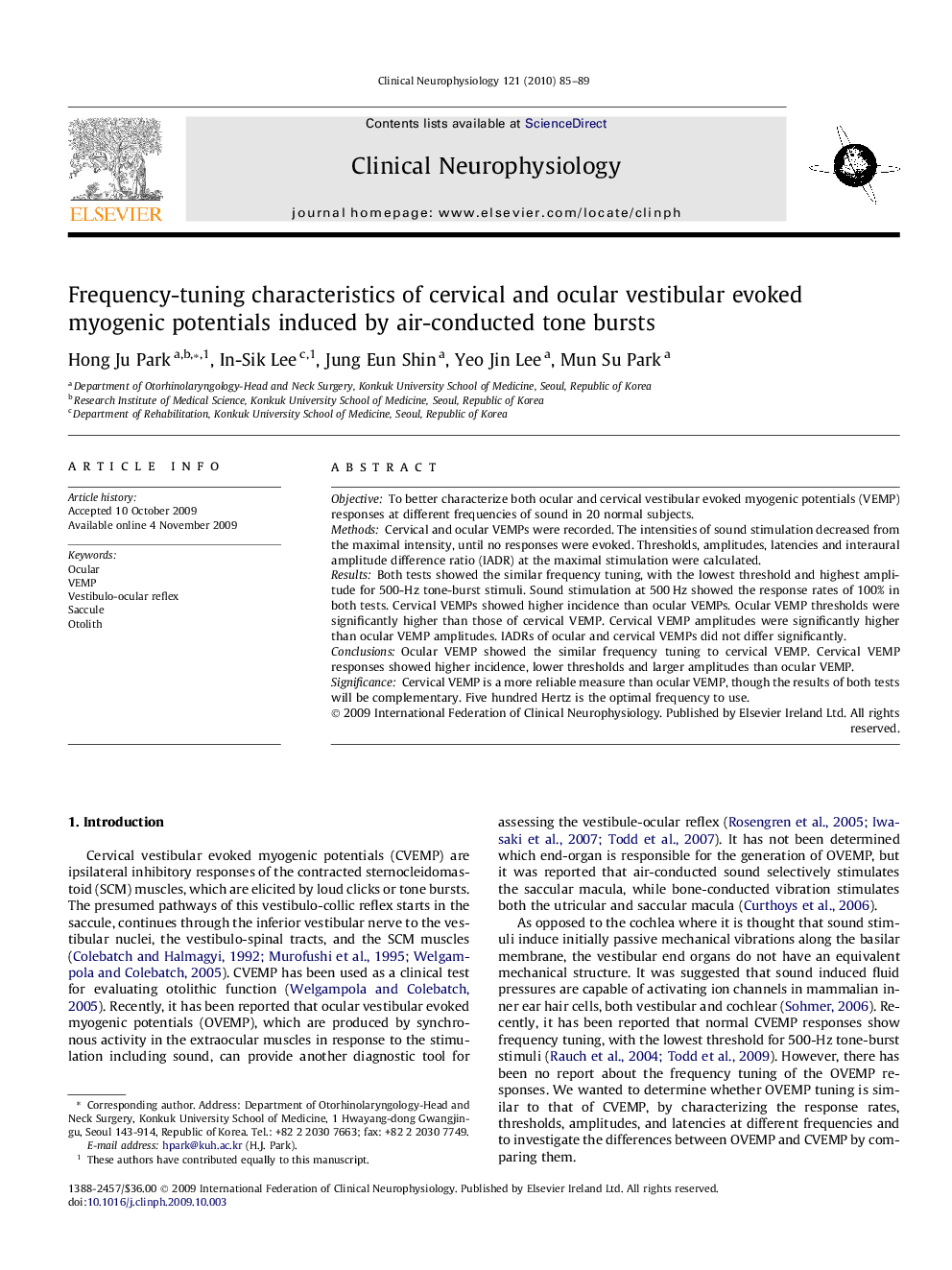| Article ID | Journal | Published Year | Pages | File Type |
|---|---|---|---|---|
| 3045352 | Clinical Neurophysiology | 2010 | 5 Pages |
ObjectiveTo better characterize both ocular and cervical vestibular evoked myogenic potentials (VEMP) responses at different frequencies of sound in 20 normal subjects.MethodsCervical and ocular VEMPs were recorded. The intensities of sound stimulation decreased from the maximal intensity, until no responses were evoked. Thresholds, amplitudes, latencies and interaural amplitude difference ratio (IADR) at the maximal stimulation were calculated.ResultsBoth tests showed the similar frequency tuning, with the lowest threshold and highest amplitude for 500-Hz tone-burst stimuli. Sound stimulation at 500 Hz showed the response rates of 100% in both tests. Cervical VEMPs showed higher incidence than ocular VEMPs. Ocular VEMP thresholds were significantly higher than those of cervical VEMP. Cervical VEMP amplitudes were significantly higher than ocular VEMP amplitudes. IADRs of ocular and cervical VEMPs did not differ significantly.ConclusionsOcular VEMP showed the similar frequency tuning to cervical VEMP. Cervical VEMP responses showed higher incidence, lower thresholds and larger amplitudes than ocular VEMP.SignificanceCervical VEMP is a more reliable measure than ocular VEMP, though the results of both tests will be complementary. Five hundred Hertz is the optimal frequency to use.
